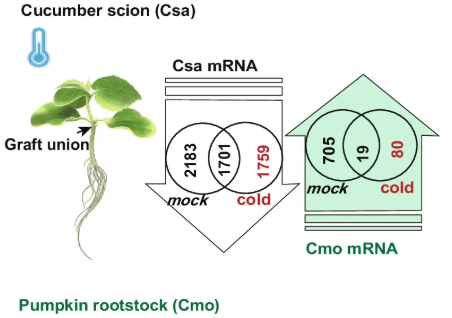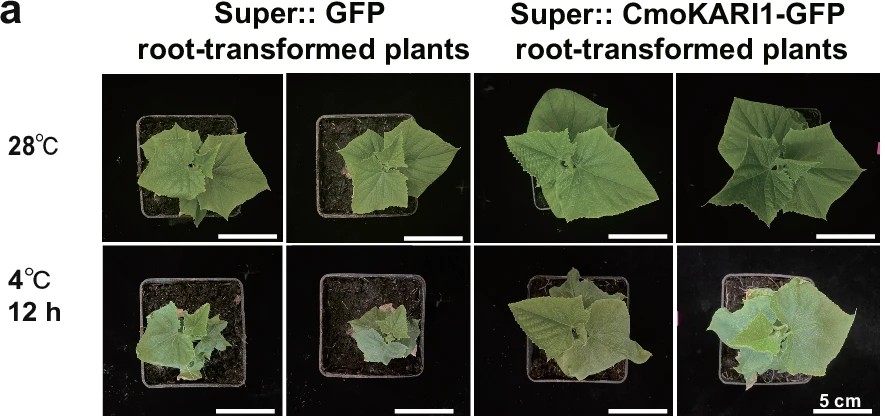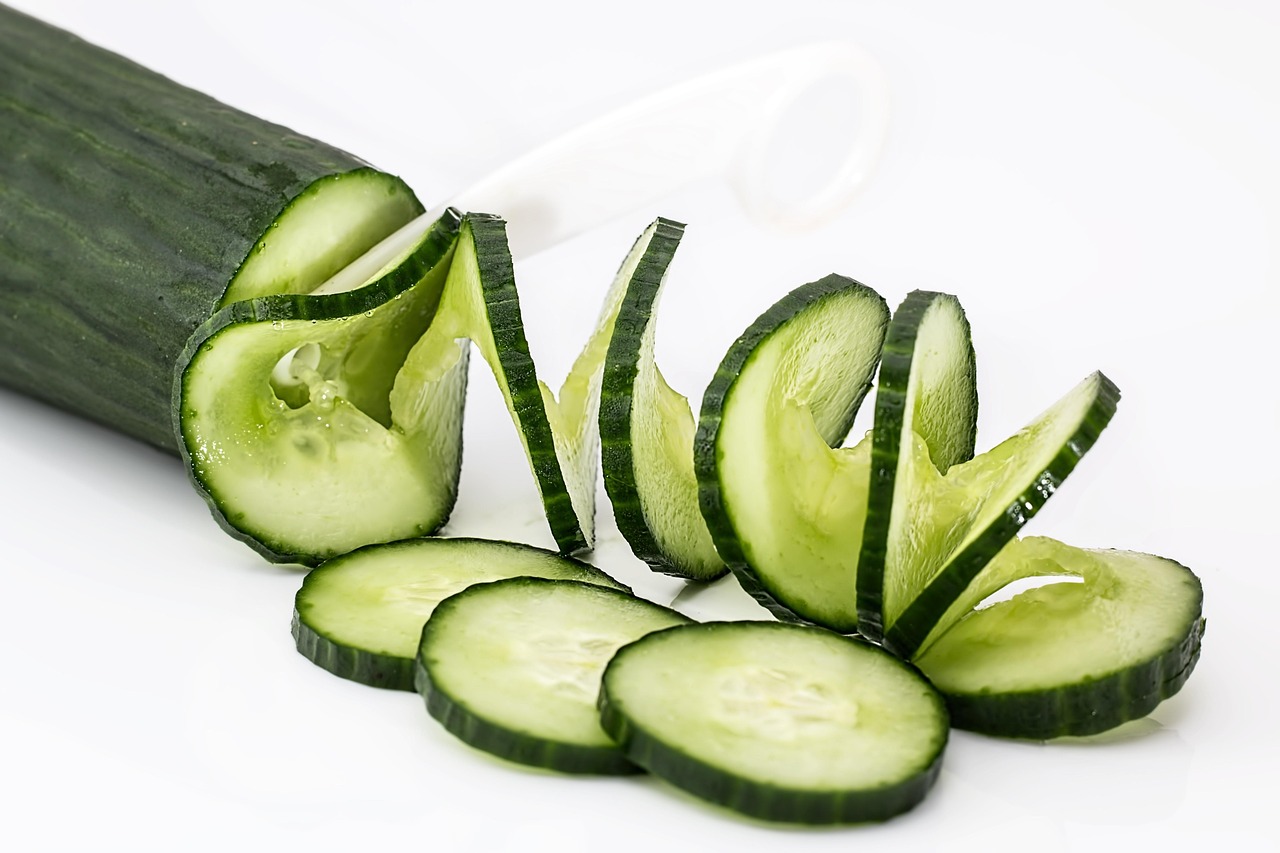- Introduction — A new discovery in plant molecular communication and chilling adaptation
- Methods — Tracking mRNA mobility and function in grafted plants
- Results — CmoKARI1 enhances chilling tolerance via JA-Ile biosynthesis
- Discussion — Redefining mRNA as a mobile messenger with functional roles
- Plant Hack — Harnessing molecular mobility for next-generation breeding
- Future Perspectives — Toward sustainable agriculture through molecularly designed rootstocks
Introduction — A new discovery in plant molecular communication and chilling adaptation
Plants, though immobile, rely on highly sophisticated molecular networks to adapt to environmental changes. Among the most critical stresses is chilling, which severely impacts crop productivity. Understanding the molecular basis of chilling tolerance is therefore essential for sustainable agriculture. Until recently, researchers mainly focused on plant hormones and transcription factors, while how signals from the root are transmitted to the shoot remained poorly understood. A recent study published in Nature Communications filled this knowledge gap by showing that pumpkin-derived mRNA “CmoKARI1” travels from the root to the leaves in grafted cucumbers, enhancing their chilling tolerance. This finding moves beyond the conventional view of grafting as a purely physical technique, highlighting molecular-level communication as a key factor in plant environmental responses.
Methods — Tracking mRNA mobility and function in grafted plants
The research team used grafted cucumber plants with pumpkin rootstocks to investigate this phenomenon. Through RNA-seq and RT-PCR, they confirmed the movement of CmoKARI1 mRNA from roots to shoots. Importantly, this movement was not random but significantly increased under chilling stress, indicating an environment-responsive molecular signaling system. To further verify its function, they introduced a GUS reporter construct, which allowed visualization of CmoKARI1 translation in the leaves, demonstrating that the mRNA is not only mobile but also functional. Additionally, metabolic profiling under chilling stress revealed activation of the jasmonoyl-isoleucine (JA-Ile) biosynthesis pathway, providing biochemical evidence of the functional impact of the transported mRNA. By integrating transcriptomics, molecular visualization, and metabolite analyses, the study provided a comprehensive picture of long-distance mRNA communication in plants.
Results — CmoKARI1 enhances chilling tolerance via JA-Ile biosynthesis
The experiments revealed that CmoKARI1 mRNA accumulates substantially in leaves within six hours of chilling stress, accounting for approximately 10% of total leaf mRNA. This significant accumulation indicates that it actively contributes to physiological processes. Once translated, CmoKARI1 promoted the JA-Ile biosynthesis pathway, a key hormonal signaling route involved in stress responses. As a result, grafted cucumbers harboring CmoKARI1 displayed enhanced tolerance to chilling, with leaves exhibiting reduced wilting compared to controls. Correlation analyses further supported a strong link between the degree of mRNA mobility and chilling tolerance, underscoring the central role of CmoKARI1 in stress adaptation.

Discussion — Redefining mRNA as a mobile messenger with functional roles
Traditionally, mRNAs were viewed as static templates for protein synthesis within cells. This study redefines mRNA as a long-distance messenger that can move across tissues and function as an information carrier in whole-plant communication. Grafting has long been used to improve disease resistance and growth vigor, but the discovery that specific mRNAs can travel and influence stress tolerance introduces a new paradigm. It suggests that rootstock choice can be guided not only by physical traits but also by the repertoire of mobile mRNAs it can deliver to the scion. Beyond chilling tolerance, it is plausible that similar mechanisms exist for drought, salinity, and pathogen resistance, making this a fertile area for future research.

Plant Hack — Harnessing molecular mobility for next-generation breeding
From the perspective of “Plant Hack” — the concept of hacking plant potential at the molecular level — this discovery represents a powerful strategy for breeding. Instead of relying solely on crossbreeding or genetic modification, grafting combined with molecular communication could allow farmers to design rootstocks that deliver beneficial mRNAs to scions. This approach could unlock traits that were previously inaccessible, enabling more resilient and adaptable crops. Since grafting is already widely used in horticulture, translating these findings into practice could be more straightforward compared to developing entirely new technologies. It is a clear example of how molecular insights can revolutionize traditional agricultural practices.
Future Perspectives — Toward sustainable agriculture through molecularly designed rootstocks
While the current study focused on chilling tolerance, the implications are much broader. Other mobile mRNAs may control key traits such as yield, quality, and tolerance to diverse stresses. In the future, rootstocks could be engineered or selected based on their molecular communication abilities, leading to crops that are inherently more resilient to climate change and extreme weather. Such an approach would not only safeguard food security but also reduce reliance on external chemical inputs, contributing to environmental sustainability. The fusion of grafting and molecular biology — a true “next-generation Plant Hack” — has the potential to reshape the future of global agriculture.



コメント